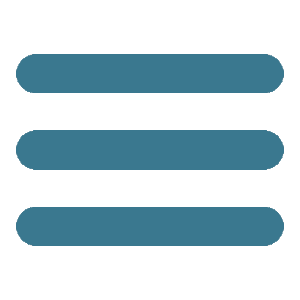mindaugas kavaliauskas
travel'air*
«So now I'm flying west on autopilot mach 0.83 or 455 miles per hour, true airspeed, and at this speed and latitude the sun is stuck in one place all the time. Time is stopped. I'm flying above the clouds at a cruising altitude of 39,000 feet, over the Pacific Ocean, flying toward disaster, toward Australia, toward the end of my life story, straight line south west until all four engines flame out»**
Chuck Palahniuk
Entering an airport is a little like crossing the threshold of a bizarre temple. In the very moment, which our feet go beyond the doors of the entrance, we are already making an offering to the ritual that will tear us from our everyday routine. In that moment begins a ceremony, punctuated actions that are repeated relentlessly, identical all over the world. A protocol made of suspended time.
The journey is not only moving towards a destination. It is also, and perhaps above all, the interruption of the rhythm that regulates our lives. When we enter an airport we pass from an open space to a closed one, physically functional. Inside we undergo the check in and boarding procedures.
In the economy of the trip, the airport area, with the exception of the runways, is merely under the structural profile and as far as the passenger is concerned an architectural interior. It is a question of an enclosed space, guarded. Unlike many other places, however, it does not inspire (much less at this particular historical juncture) a sense of shelter and protection that relates to that abstract principle of interiority, which comes to the individual brought by mnemonic and culture. In an airport time is reshaped by the procedures, by the artificial scansion supplied by the timetable boards. In large part, those natural references, which we are accustomed, thanks to the variation offered by natural light and by climatic events gets lost. (1) All that is normality that accompanies us from when we were born is outside.
Here inside, in this space, it is not so easy to find elements of identity, if not relative to that category that defines the very concept of airport. The same relational space appears enacted inside the control procedures. The historical level is almost non-existent, and when traces can be detected it is artificial and relegated to more of a localization phenomena often of a commercial nature. We pass completely into a place in which is applied the inflated definition of Augé of non-place. (2)
Once on board the aircraft, however long our journey can be, the pattern does not change too much. Yes, maybe we have some compulsory openings on the relational front. But the journey continues to be shown as a transit activity in an environment poorly equipped with identity, of historical or relational character. We move from a non-place to another until we arrive at our destination.
How does the gesture of photography propose itself in this context? In fact, the act that allows the withdrawal of a portion of the delimited space of the frame, and determined by the photographer’s choices, could amount to a kind of counterpart of the non-place where it is performed.
In it flows in fact the will to put in place some form of relational relationship with what one has before him. It is moving, that is, inside the track outlined by Merleau-Ponty when he distinguishes the geometric space from that of anthropological. (3) The shot itself fixed in suspended time, gives a definition, prevents it vanishing within the rituals of the codes of behaviour that apply in that non-place.
It is custom as a statistical majority, that photography has always been delegated the task to... freeze the passage of time, to halt a trace as an eternal memory of what, already in the same moment of the shot, should be defined with a time in the past. In the alienating conditions of transit, as much our perception of space as that of time suffers heavy changes. Shooting, instead, takes on a thaumaturgical action. It takes upon itself the burden of reactivating the jammed chronological mechanism. At a time when the shutter is released we are aware of the double passing of the dimensions that surround us. Somehow we will repossess the spaces in which we are passing. We see the condition non-place shrink where our journey takes place. We feel it become more habitable.
[ Sandro Iovine ]
--------------------------------------------
(*) - Travel'Air is a photographic work undertaken by Mindaugas Kavaliauskas during his many business trips by plane around the world. Since 2005 he has started to collect images of what was happening around him. In 2013, the images became the Travel'Air book, published by VšĮ „Šviesos raštas“. The book, printed in an edition of 300 copies, can be purchased at this address.
(**) - Chuck Palahniuk, Survivor, Vintage Books/Random House, London, 2003; pp. 286-285.
(1) - cfr. Paolo Giardiello, iSpace, oltre i non luoghi, Lettera Ventidue Edizioni, Siracusa, 2011; pp. 21-27.
(2) - cfr. Marc Augé, Nonluoghi, introduzione a una antropologia della surmodernità, Eleuthera Editrice, Milan, 2005; p. 73.
(3) - cfr. Maurice Merleau-Ponty, Phénoménologie de la perception II. Le monde perçu in Oeuvres, Gallimard, Paris, 2010; pp. 955-994.

 home
cover ▼
opinions
news ▼
portfolio
post.it
post.cast
video
ongoing
thematicpaths
googlecards
FPtag
home
cover ▼
opinions
news ▼
portfolio
post.it
post.cast
video
ongoing
thematicpaths
googlecards
FPtag








 Mindaugas Kavaliauskas - He was born in 1974 in Kaunas, Lithuania, where he lives until present working as photographer, curator of photography, editor and publisher of books of photography. He studied Art History and Photography in Kaunas, Arles, Paris and Lausanne. He is founder and director of NGO “Šviesos raštas”, institution for promotion of photographic art (since 2003). He is invited jury panel member, invited curator within international photo festivals, photography competitions, awards, such as European Central Bank Annual Photography Award (Frankfurt), Fotofest (Houston), PHotoEspaña (Madrid). He is recipient of numerous national and international awards, scholarships, honor titles for achievements in photography. He is founder and director of
Mindaugas Kavaliauskas - He was born in 1974 in Kaunas, Lithuania, where he lives until present working as photographer, curator of photography, editor and publisher of books of photography. He studied Art History and Photography in Kaunas, Arles, Paris and Lausanne. He is founder and director of NGO “Šviesos raštas”, institution for promotion of photographic art (since 2003). He is invited jury panel member, invited curator within international photo festivals, photography competitions, awards, such as European Central Bank Annual Photography Award (Frankfurt), Fotofest (Houston), PHotoEspaña (Madrid). He is recipient of numerous national and international awards, scholarships, honor titles for achievements in photography. He is founder and director of